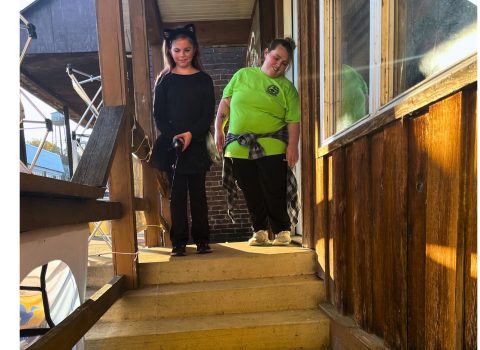In the Mountain View neighborhood in Albuquerque, New Mexico, there has been a long-standing need for air quality data to validate lived experiences of elevated rates of cancer and respiratory conditions in the community. In a collaborative project initiated by community and partner organizations, Valle de Oro National Wildlife Refuge is working to address this need through the Environmental Justice Air Monitoring Network (EJ Air) initiative.
Valle de Oro was established in 2012 through a community desire to preserve and restore local green spaces and prevent further industrial development. Located on ancestral homelands of the Tiwa Pueblo People, the present-day Mountain View neighborhood is a low-income community disproportionately impacted by Albuquerque’s heavy industry. From its inception, Valle de Oro has prioritized environmental justice concerns raised by the community. A cornerstone supporting its mission was the development of the refuge’s Environmental and Economic Justice Strategic Plan, the first and only such plan in the refuge system. The plan was initiated and evolved through a community-based participatory research project directed by Los Jardines Institute, Friends of Valle de Oro, and the refuge.
RELATED: Environmental Justice Issues in Mountain View
The plan has six goals, including institutionalizing environmental justice, engaging the community in collaborative management, and serving as a model for other public land sites.
A priority of the plan, EJ Air is part of a growing hope within the community to address its history of environmental injustice.
The EJ Air project is a multiyear effort with three goals: (1) to establish an air monitoring network to accurately and representatively measure pollutants of concern; (2) to engage community in the processes of planning, installing, and maintaining this network; and (3) to provide data to the public in a relevant and digestible way. In 2022, Valle de Oro secured a one-time award from the Bureau of Indian Affairs. A portion of the funding was transferred to the Pueblo of Isleta Environment Department to seed its sovereign Tribal air monitoring program, and the remainder was used to fund the project in Mountain View.
The EJ Air team is currently planning an initial deployment of 12 air quality sensors throughout Mountain View and the South Valley. They will measure particulate matter (PM) – pollution for which Albuquerque received a failing grade from the American Lung Association in 2024. PM is elevated in the Mountain View neighborhood due to diesel and traffic emissions; cement, asphalt, and recycling operations; and fugitive dust from industrial rubble piles. Coupled with wind sensors, the air quality sensors will allow the team to estimate which areas have elevated concentrations of PM and identify sites to perform more extensive monitoring. Valle de Oro will use the data to protect the health of wildlife, plants, staff, and visitors. The project team has also begun to pilot an interactive outdoor education curriculum in collaboration with Bosque Ecosystem Monitoring Program to educate local youth about air quality and environmental justice.
EJ Air staff is supported by a steering committee including the Mountain View neighborhood organizations, Pueblo of Isleta, Los Jardines Institute, Ancestral Lands Conservation Corps, Valle de Oro National Wildlife Refuge, Friends of Valle de Oro, and Bosque Ecosystem Monitoring Program.
As we embark on this work, EJ Air, Valle de Oro, and all of our partners seek to build a rich dialogue with community and local institutions to chart a path toward cleaner, healthier air for all. This community is committed to address the injustices of the past and today. Valle de Oro and its partners are proud to stand together working to a better future.
Environmental Justice Issues in Mountain View
- In the 1950s, the local acequia (irrigation water supply) was contaminated by the aviation industry, now part of the South Valley Superfund Site.
- In the 1970s, Albuquerque re-zoned the neighborhood agricultural area for heavy industry, which resident and Mountain View Neighborhood Association board member Lauro Silva considers environmental racism for targeting an unincorporated community of color.
- In 1979, a baby almost died of methemoglobinemia (blue baby syndrome) after drinking groundwater containing over 20 times the legal limit of nitrates. This groundwater contamination spurred decades of community organizing.
- In the early 2000s, South Valley Partners for Environmental Justice trained community environmental health educators called “promotores” to document toxic spills and identify air pollution sources.
- Most recently, a community coalition developed a Health Equity and Environmental Impacts regulation that would provide a mechanism for denying additional air permits in communities overburdened by air pollution. The local Air Quality Control Board adopted a modified version of the rule in December 2023. The Mountain View Coalition, unconvinced the modified version is adequate, filed a Title VI civil rights complaint against Albuquerque in June 2024. Los Jardines Institute has filed a similar Title VI complaint.
- Read the full magazine or subscribe.



